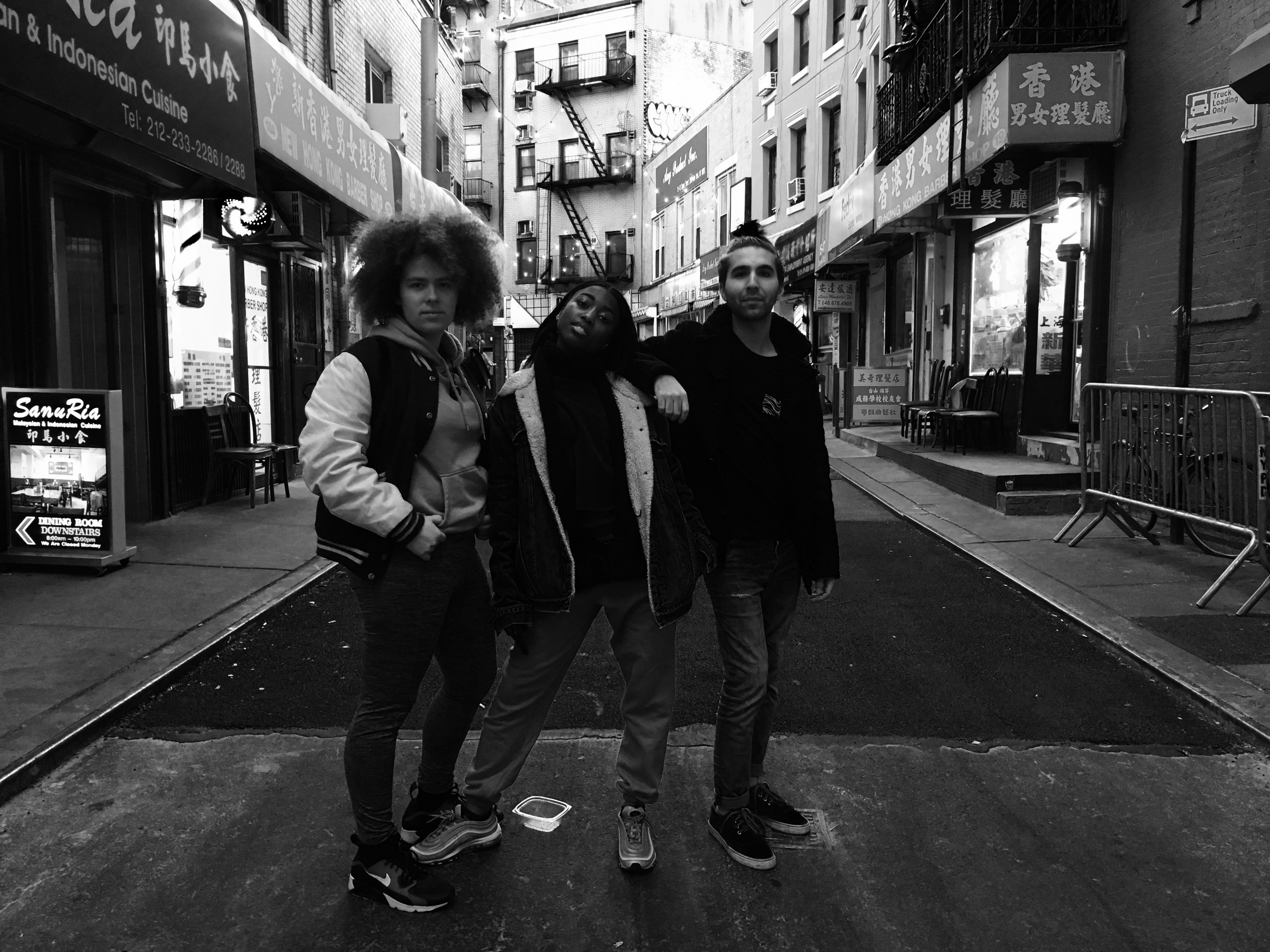3 Original Concepts:
I. Gentrification
Record people→ getting first hand accounts
Focus on shop owners
People outside their apartments
Older adults
Record surrounding sounds
-street
-cars
-keys
-doors slam
-dishes clinking
Use the final soundwalk as a first hand emotional account of how Chinatown feels about the issue of gentrification. By using their voices it will give a more clear and concise soundwalk
II. Mafia
Pick three locations that have connections to gang history: Murder Alley/Bloody Angle/ collect pond
alleys/ the curb point/ three streets center of chinatown/curved street “filled with blood”
Find iconic points
Historical sounds might be available
Chinese music
**what makes chinatown different from other neighborhoods, what there is specific to that area**
Be specific about rivalries about gangs
Noir tradition of detective novels, romantic and poetic
Get someone who speaks chinese maybe help translate
Be careful of being too stereotypical
**list stereotypes of chinatown**
Recording has to be five-seven minutes
Find a line between past and present
With sound keep like a background the stay constant
Go to markets
Park near the courthouse supposedly gang run ins
Collect pond→ might be why canal street is named what it is
We would use the perspective of a person from the person that belonged in the mafia or someone that was getting chased. We would describe the reasons that person was in the conflict and have the audio place you in their shoes.
III. Different Religions
We would collect sounds from different religious ceremonies and talk about how the immigration from china and europe created this small community with different religions and the way that they changed when they were here. And the representation of their old country in this small segment of manhattan Square’s statue of Lin Zexu, a Qing Dynasty official who led the fight against Britain’s illegal importation of opium. But most of us will want to start eating and shopping our way through the busy streets
Research:
Many communities come under social issues in some way or another and Chinatown is no different. Since the 60’s Chinatowns gang violence has continued throughout the years. Chinese gangs compete in the underground slums; gangs like Ghost Shadows, Flying Dragons, and Leong Tong organization. The span and influence of these gangs have traveled far beyond New York and even the United States borders. Gang activity linked to Chinese gangs has been traced from London, Sydney, Canada, and British Columbia.
The origins of gang violence was cultivated from fear and security. Back when Malaysian, Chinese, and Taiwanese immigrants were arriving in New York, they were under scrutiny and harsh treatment, so in an effort to protect themselves from causcaisms they banded together and created gangs. With a huge pool of new immigrants, the gangs quickly grew and Turf wars became a common event. With tension always high, Chinatown wasn’t a particular safe and secure area to venture into. Notable killings, secret gambling operations, and drug trafficking were popular occurrences in Chinatown.
Along with an abundance of illegal gang violence, the Chinese mafia were also responsible for smuggling in a number of immigrants. Modern day Chinatown doesn’t have the same level of gang activity as it did some 20, 30 years ago. Due to gentrification and progression, a lot of old Chinatown has been revamped and adapted with the influ of new people coming to the city. With more ethnicities and more opportunity, Chinese gangs have been diluted and aren’t as prominent in Chinatown.
As of right now, public gang violence is at a low plateau, however that doesn’t stop the ongoing drug smuggling and kidnapping continues in between alleys and basements. To great relief the gang attacks and shootouts have ceased and aren’t as messy and unpredictable. The still most notable and prevalent gang is the Leong Tong organization. They have expanded their business and move drugs all over the world which they are then able to sustain their illegal activity because of this lucrative business.
Final Poster:

Final Sound Walk:
Reflection:
The work each of us did was very evenly divided. Ian was the voice of our sound walk, Bailee wrote the script, Sofia drew the poster and I edited the audio files to form the final sound walk.
We all worked well together, constantly bouncing ideas off each other.
At the beginning it took a while for us to find a concept we were all passionate about, but with “hold on tightly, let go lightly” mentality we were able to land on the noir crime investigation style for our piece.
One of our first ideas was to do a reenactment of what it was like to be in Chinatown while these gangs were thriving, but we thought that would be too cheesy. We then thought of doing a crime/news report, but we felt like there was something better when we finally found our idea.
The first draft of our poster was more generic with the title, “A Walk in Chinatown”. We all agreed that it didn’t fit the mood of our piece; no gangs were referenced.
After discussing it further we decided to make the poster of Doyer Street, a famous curved street in Chinatown, also known as The Bloody Angle. The final poster had a darker feeling and definitely goes well with the content of our sound walk. The main colors are red and yellow, paying respects to the traditional Chinese colors.
Our team had a great dynamic overall. We were laughing and had fun throughout this project which I think is the most important part.
Notes:

